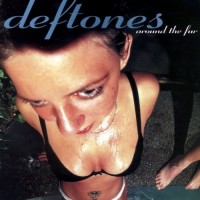The late 90’s were a time when any music that was loud, aggressive, and guitar driven stood the chance of being labeled nu-metal. In the Deftones case, that label was likely unfairly placed upon the band. While there were certainly common links between the band and the nu-metal genre there were far more differences. While many nu-metal bands focused on all out aggression, Deftones influences were much broader. While it’s unlikely most of their fans would know it, at the time, there were elements of The Cure, My Bloody Valentine, Ride, and hardcore punk present. While many of their contemporaries were seeing, who could make the loudest and most discordant music, Deftones were cultivating a sound all their own.
You could hear elements of this on album opener “My Own Summer (Shove It)” which featured the bands trademark transitions between quieter verses and louder choruses. The opening riff may also be one of the best of the late 90’s metal scene as a whole. While the band is still dwelling on things that fit nicely under the umbrella of teen angst, they were taking a different lyrical approach than many of their contemporaries as well. While Chino Moreno was never a contender for poet Laurette, he was a subtler lyricist than many of the bands he’d join on the Family Values Tour.
While the band hadn’t reached the musical heights, they would on their next album, White Pony, the progression from Adrenaline to Around the Fur was still impressive. Their sound had become more textured, they’d become more confident, and the band was tighter. This is most obvious on the album’s second, and most popular single, “Be Quiet and Drive (Far Away).” When you compare their musical growth between their debut and sophomore albums to many of their contemporaries, the fact Deftones were never given the same star treatment as a band, like Korn, is a bit infuriating.
An important element of the band’s sound, on this album were audio effects provided by Frank Delgado. While this would include some turntable and sampling work, he was utilized in a manner that had much more in common with the tape effects Martin Swope provided in Mission of Burma than they did with the elements someone like DJ Lethal brought to Limp Bizkit. This added an extra layer of sound to songs like the previously mentioned album opener, the title track, and “Dai the Flu.”
These elements came together to make this one of the most artistically significant, although not commercially successful albums, that came out of the late 90’s metal scene. It is likely these elements also played a major role in why Deftones haves remained a band I have kept in regular rotation since middle school. This album, for me, is a near classic. It would take them another two years to produce their first outright classic though.
